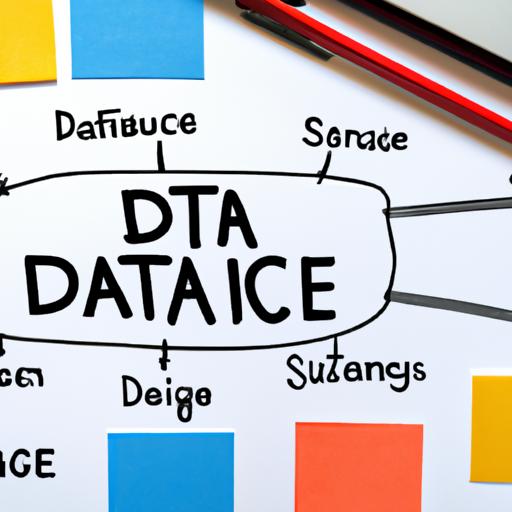Introduction to Data Infrastructure and Analytics

In today’s data-driven world, businesses are constantly seeking ways to gain a competitive edge. That’s where data infrastructure and analytics come into play. But what exactly do these terms mean, and why are they so crucial in modern-day decision making?
Definition and Significance of Data Infrastructure and Analytics
Data infrastructure refers to the underlying foundation that supports the storage, management, and processing of large volumes of data. It encompasses the hardware, software tools, and systems required to collect, store, and analyze data effectively. On the other hand, data analytics involves the extraction of insights from data through various techniques and methodologies.
Importance of Data-Driven Decision Making
In today’s fast-paced business landscape, making informed decisions is paramount. Data-driven decision making allows organizations to base their strategies and actions on factual information rather than relying solely on intuition or guesswork. By leveraging data infrastructure and analytics, businesses can gain valuable insights into customer behavior, market trends, and operational efficiency, leading to improved decision-making processes.
But why is data-driven decision making so critical? Well, consider this: imagine you’re driving blindfolded without any knowledge of the road ahead. It would be nearly impossible to navigate and reach your destination efficiently. Similarly, without data-driven insights, businesses are essentially operating blindfolded, missing out on opportunities and exposing themselves to unnecessary risks.
By harnessing the power of data infrastructure and analytics, organizations can uncover patterns, detect anomalies, and discover hidden correlations that would otherwise go unnoticed. This enables them to make data-backed decisions that drive growth, enhance customer experiences, optimize operations, and ultimately, achieve their strategic objectives.
In the next section, we’ll delve deeper into the key components of data infrastructure, shedding light on the hardware and software requirements necessary for its successful implementation.
Stay tuned to unravel the secrets of building a robust data infrastructure!
Key Components of Data Infrastructure

To build an effective data infrastructure, it’s crucial to understand the key components that form its foundation. Let’s explore the hardware requirements, software tools, and data storage systems that play a vital role in supporting data management and analytics.
Hardware Requirements for Data Infrastructure
When it comes to data infrastructure, having the right hardware is essential for smooth operations and efficient data processing. High-performance servers, storage devices, and networking equipment are the backbone of any robust data infrastructure. These components ensure the reliability, scalability, and availability of data, allowing for seamless data management and analytics processes.
Software Tools and Technologies for Data Management
Data management is a critical aspect of data infrastructure. Organizations rely on a variety of software tools and technologies to store, organize, and process their data effectively. This includes database management systems (DBMS) like MySQL, Oracle, and MongoDB, which provide structured storage and retrieval capabilities. Additionally, data integration tools, data governance software, and data quality solutions play a crucial role in ensuring data accuracy, consistency, and security.
Data Storage and Retrieval Systems
Data storage is a fundamental component of data infrastructure. Traditional storage options such as hard disk drives (HDDs) and solid-state drives (SSDs) offer reliable and high-capacity storage solutions. However, with the exponential growth of data, organizations are increasingly turning to cloud-based storage options like Amazon S3, Google Cloud Storage, or Microsoft Azure Blob Storage. These cloud storage platforms provide scalability, cost-effectiveness, and enhanced accessibility, allowing businesses to store and retrieve massive amounts of data seamlessly.
In summary, the key components of data infrastructure include the hardware, software tools, and data storage systems that facilitate efficient data management and analytics. By ensuring the right hardware, leveraging advanced software tools, and implementing effective data storage and retrieval systems, organizations can establish a solid foundation for their data-driven initiatives.
In the upcoming section, we will explore the crucial factors to consider when designing an effective data infrastructure. Stay tuned to uncover the secrets of building a scalable and secure data infrastructure!
Designing an Effective Data Infrastructure

When it comes to data infrastructure, designing an effective system is crucial for organizations to leverage the full power of their data. Let’s explore the key considerations that go into creating a robust and efficient data infrastructure.
Planning and Architecture Considerations
Before embarking on the design process, careful planning and thoughtful architecture considerations are essential. This involves determining the specific goals and requirements of the data infrastructure, understanding the types of data that will be collected and analyzed, and defining the scope of the system.
By taking the time to thoroughly plan and design the infrastructure, organizations can ensure that it aligns with their business objectives and supports their long-term data needs. This includes considering factors such as data volume, data sources, integration requirements, and future scalability.
Scalability and Performance Optimization
As data continues to grow at an exponential rate, scalability becomes a critical factor in designing a data infrastructure that can handle increasing volumes of information. Organizations must consider how the infrastructure will scale with the growing demands of data processing, storage, and analysis.
Additionally, optimizing performance is essential to ensure that data can be accessed and processed efficiently. This involves utilizing techniques such as parallel processing, distributed computing, and load balancing to maximize the system’s speed and responsiveness. By optimizing performance, organizations can unlock the full potential of their data infrastructure and extract insights in a timely manner.
Security Measures for Data Protection
Data security is of paramount importance when designing a data infrastructure. Organizations must implement robust security measures to protect sensitive data from unauthorized access, breaches, or cyber threats. This includes implementing encryption protocols, access controls, and regular security audits to ensure data integrity and confidentiality.
Moreover, compliance with relevant data protection regulations, such as the General Data Protection Regulation (GDPR), is essential. Organizations must design their data infrastructure with privacy and regulatory requirements in mind, ensuring that personal and sensitive data is handled in a compliant and secure manner.
By considering planning, architecture, scalability, performance optimization, and security measures, organizations can design a data infrastructure that not only meets their current needs but also sets them up for future success.
In the upcoming section, we will explore the implementation of data analytics processes and how they can unlock valuable insights from your data infrastructure. Stay tuned!
Implementing Data Analytics Processes
Data analytics is the key to unlocking the true potential of your data. In this section, we’ll explore the fundamental aspects of implementing data analytics processes, including understanding its applications, exploring different types of analytics techniques, and the importance of data preprocessing and cleaning.
Understanding Data Analytics and Its Applications
Data analytics is the practice of examining vast amounts of data to uncover meaningful patterns, insights, and trends. By applying statistical models, algorithms, and machine learning techniques, organizations can extract valuable information that can drive informed decision making.
But how can data analytics be applied in real-world scenarios? Well, the applications are limitless! Whether you’re in marketing, finance, healthcare, or any other industry, data analytics can provide invaluable insights. For instance, in marketing, data analytics can help identify customer preferences, target specific audiences, and optimize marketing campaigns. In finance, it can aid in fraud detection, risk assessment, and portfolio optimization. The possibilities are endless, limited only by your imagination and the data at hand.
Exploring Different Types of Analytics Techniques
Data analytics encompasses various techniques, each serving a specific purpose. Let’s explore a few common types:
-
Descriptive Analytics: Describes what has happened in the past by summarizing historical data, providing a retrospective view of events.
-
Diagnostic Analytics: Seeks to understand why something happened by analyzing the relationships between different variables and identifying contributing factors.
-
Predictive Analytics: Utilizes historical data to forecast future trends, enabling proactive decision making and scenario planning.
-
Prescriptive Analytics: Takes predictive analytics a step further by recommending the best course of action to optimize outcomes and achieve desired goals.
Data Preprocessing and Cleaning
Before diving into data analysis, it’s crucial to ensure the quality and integrity of the data. Data preprocessing involves cleaning, transforming, and preparing the data for analysis. This step eliminates errors, inconsistencies, and missing values, ensuring accurate and reliable results.
Data cleaning involves handling outliers, removing duplicate entries, and resolving inconsistencies. By addressing these issues, organizations can trust the integrity of their data and make confident decisions based on reliable information.
Now that we’ve covered the implementation of data analytics processes, let’s move on to the next section, where we’ll explore how data infrastructure and analytics can provide valuable business insights.
Stay tuned to uncover the secrets of leveraging data infrastructure for business growth!
Challenges and Future Trends in Data Infrastructure and Analytics
The world of data infrastructure and analytics is constantly evolving, bringing about new challenges and exciting future possibilities. As organizations strive to harness the power of data, it’s essential to stay informed about the potential roadblocks and emerging trends in this dynamic field.
Common Obstacles Faced in Data Infrastructure Implementation
Implementing a robust data infrastructure comes with its fair share of challenges. One of the primary obstacles is ensuring the scalability and performance optimization of the infrastructure. As data volumes grow exponentially, organizations must design their infrastructure to handle the increasing demand without compromising efficiency and speed.
Another significant hurdle is data security. With the rise in cyber threats and stringent data protection regulations, organizations must prioritize the implementation of robust security measures. Safeguarding sensitive data from unauthorized access and ensuring compliance with privacy regulations are crucial factors in building a trustworthy data infrastructure.
Addressing Data Privacy and Ethical Concerns
In the era of data-driven decision making, organizations must also navigate the ethical considerations surrounding data collection and usage. Respecting user privacy and obtaining informed consent for data collection are essential to maintain trust. Transparency in data handling practices and adhering to ethical guidelines are vital for businesses to establish themselves as responsible data stewards.
Emerging Technologies and Future Developments in Data Analytics
As technology advances, the future of data infrastructure and analytics holds immense potential. Emerging technologies such as artificial intelligence (AI), machine learning (ML), and the Internet of Things (IoT) are set to revolutionize the field. These technologies enable organizations to extract even deeper insights from their data, automate processes, and drive innovation.
Furthermore, advancements in cloud computing and big data analytics platforms provide organizations with more accessible and scalable solutions for managing and analyzing large volumes of data. These developments empower businesses of all sizes to leverage the power of data, previously accessible only to larger enterprises.
In conclusion, data infrastructure and analytics play a pivotal role in driving business growth, facilitating informed decision making, and unlocking valuable insights. However, organizations must remain adaptable to overcome challenges, prioritize data privacy and ethics, and embrace emerging technologies to stay ahead in this ever-evolving landscape.
Thank you for joining me on this journey through the world of data infrastructure and analytics!
